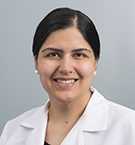20 Oct Machine Learning Applied To Predicting High-Risk Breast Lesions May Reduce Unnecessary Surgeries
MedicalResearch.com Interview with:
Manisha Bahl, MD, MPH
Director, Breast Imaging Fellowship Program,
Massachusetts General Hospital
Assistant Professor of Radiology,
Harvard Medical School
MedicalResearch.com: What is the background for this study? What are the main findings?
Response: Image-guided biopsies that we perform based on suspicious findings on mammography can yield one of three pathology results: cancer, high-risk, or benign. Most high-risk breast lesions are noncancerous, but surgical excision is typically recommended because some high-risk lesions can be upgraded to cancer at surgery. Currently, there are no imaging or other features that reliably allow us to distinguish between high-risk lesions that warrant surgery from those that can be safely followed, which has led to unnecessary surgery of high-risk lesions that are not associated with cancer.
We decided to apply machine learning algorithms to help us with this challenging clinical scenario: to distinguish between high-risk lesions that warrant surgery from those that can be safely followed. Machine learning allows us to incorporate the full spectrum of diverse and complex data that we have available, such as patient risk factors and imaging features, in order to predict which high-risk lesions are likely to be upgraded to cancer and, ultimately, to help our patients make more informed decisions about surgery versus surveillance.
We developed the machine learning model with almost 700 high-risk lesions, then tested it with more than 300 high-risk lesions. Instead of surgical excision of all high-risk lesions, if those categorized with the model to be at low risk for upgrade were surveilled and the remainder were excised, then 97.4% malignancies would have been diagnosed at surgery, and 30.6% of surgeries of benign lesions could have been avoided.
MedicalResearch.com: What should clinicians and patients take away from your report?
Response: Our study provides proof of concept that a machine learning model can be applied to predict the risk of upgrade of high-risk breast lesions to cancer. Use of our model has the potential to decrease unnecessary surgery by nearly one-third in women with high-risk breast lesions and could support shared decision making with regard to surgery versus surveillance of high-risk lesions.
MedicalResearch.com: What recommendations do you have for future research as a result of this study?
Response: We are actively working to incorporate this risk prediction tool into our daily clinical practice and hope to use it to guide clinical decision making very soon. The next step of this work is to incorporate the actual mammographic images and histopathology slides into the machine learning model.
MedicalResearch.com: Thank you for your contribution to the MedicalResearch.com community.
Citation:
Manisha Bahl, Regina Barzilay, Adam B. Yedidia, Nicholas J. Locascio, Lili Yu, Constance D. Lehman. High-Risk Breast Lesions: A Machine Learning Model to Predict Pathologic Upgrade and Reduce Unnecessary Surgical Excision. Radiology, 2017; 170549 DOI: 10.1148/radiol.2017170549
Note: Content is Not intended as medical advice. Please consult your health care provider regarding your specific medical condition and questions.
[wysija_form id=”1″]
Last Updated on October 20, 2017 by Marie Benz MD FAAD

